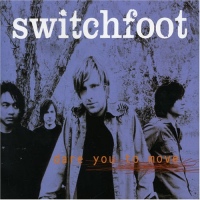Piano Sheets > Switchfoot Sheet Music > I Dare You To Move (ver. 1) Piano Sheet
I Dare You To Move (ver. 1) by Switchfoot - Piano Sheets and Free Sheet Music

About the Song
"Dare You to Move" is a single by the rock band Switchfoot from the Double-Platinum selling album The Beautiful Letdown. It rode the Top 40 radio charts, and its accompanying music videos received considerable play on MTV, VH1, FUSE TV, and other mainstream channels. It peaked at No. 17 on the U.S. Hot 100, # 9 on the US Modern Rock lists, and #4 on the U.S. Top 40 Charts, among other successful chart runs, becoming Switchfoot's second top ten single, surpassing even the success of their breakthrough single, "Meant to Live".
The song, which appeared as the fifth track on The Beautiful Letdown was a long-lasting hit and eventually was certified "Gold" as a music single in April, 2005. The song also appears on Switchfoot's greatest hits album, The Best Yet. Switchfoot is an American alternative rock band from San Diego; California. The bands members are Jon Foreman (vocals; guitar); Tim Foreman.
Download this sheet!
About the Artist

Random article
How to search for the best free sheet music on the internet If you would love to learn how to play the piano but do not have the funds to afford expensive lessons then sheet music can help you. There are plenty of websites online, which provide you with free sheet music. You can play classic compositions using such sheet music free piano.
Different styles
You can search online to find free sheet music for piano. There are sites, which provide many different kinds of genres of music and the piano notes for such compositions. Whether it is rock and roll, pop, rhythm and blues, classics or some other genre, you are sure to find the appropriate musical notes for these compositions.
(More...)
